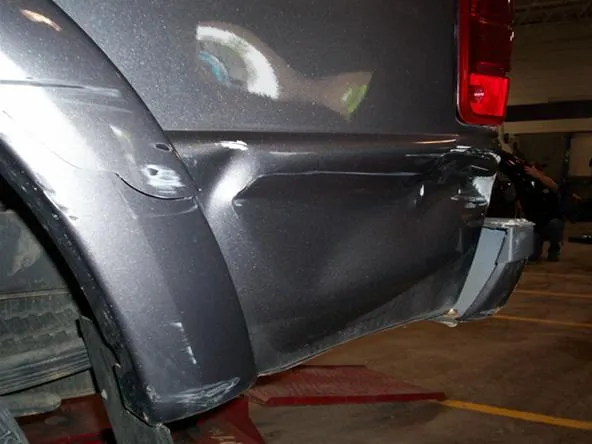
First Things First
Before you can begin to work on a damaged panel, you must determine what type of material that you are working on. For instance, the panel may be mild steel, high strength steel, aluminum, plastic, sheet molded compound, or a number of other types of material.
Why Is This Important?
Each type of metal or composite have different repair methods and cautions that must be considered. If you are working on a fender that is made with high strength steel, you must be aware of the amount of heat that can be applied to the panel. If overheated, the metal will be weakened. Some auto manufacturers may recommend no heat to be used at all. Therefore, all cold repair methods must be used. Some parts are made out of ultra high strength steel, boron and magnesium. These parts generally require replacement only.
Mild Steel
In this lesson we're going to focus on body parts such as fenders, hoods, quarter panels, etc. that are made with mild steel.
Repair or Replace
Once we have determined the damaged panel is mild steel, we need to analyze the damage to decide if repair or replace is a best option. Here are a few questions that you can ask yourself:
1. Will the cost of the panel exceed the cost of repair?
For example, if a shop charges $50 per hour and a $200 hood has 5 hours of damage, which would be the best option? A new hood, right? It would cost $250 to repair the hood and $200 to replace it. Sure, there will be more paint time involved, but replacement would be the better option.
2. Can the panel be repaired?
Sometimes it is not which method is more economical, but whether the part is repairable. The damage may be too severe to properly repair.
3. Will a repair cause safety issues?
Damage may be in an area that should not be repaired. For example, damaged crush zones or a part that is severely kinked. This may require replacement only.
4. Does the vehicle have prior damage?
I know that insurance will not pay for prior damage, but you don't want to repair a panel with excessive prior damage or rust. This may be an extra expense from the customer.
5. How complex is the damage?
Is the damage on body lines that have been work hardened from the factory? Can you gain access to the damaged area? Will this be a one sided or two sided repair?
Ask yourself these questions as you inspect the damage. Once you have determined that repair is the best option, next you can begin the repair process, which we'll discuss in the next article.
























Comments
Be the first, drop a comment!